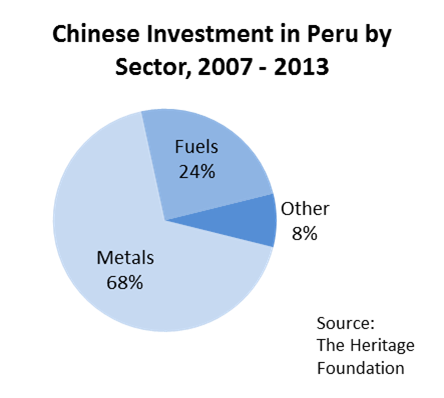China, India & Colombia’s Interbolsa
Colombian firm Interbolsa is being liquidated in a move to protect the interests of Colombia’s financial markets.
While the practices of Chinese firms continue to attract criticism in many cases, a new study by American University and the World Resources Institute suggests gradual adaptation and improvement in environmental and social practices among Chinese mining companies in Peru. The study examined the operations of Shougang Corporation in Marcona, Minería Chinalco in Toromocho, and Jinzhao Corporation in Pampa de Pongo.
 The first major Chinese mining investment in Peru, Shougang Corporation acquired an iron ore mine in Marcona in 1992. The venture has been widely cited as an example of poor project execution and failed community engagement. Shougang’s contentious beginnings continue to influence Peruvian perceptions of Chinese mining companies. In recent years, however, the corporation has delivered medical equipment to Marcona and implemented various social projects in an effort to improve its tarnished image and reshape relations with the local community.
The first major Chinese mining investment in Peru, Shougang Corporation acquired an iron ore mine in Marcona in 1992. The venture has been widely cited as an example of poor project execution and failed community engagement. Shougang’s contentious beginnings continue to influence Peruvian perceptions of Chinese mining companies. In recent years, however, the corporation has delivered medical equipment to Marcona and implemented various social projects in an effort to improve its tarnished image and reshape relations with the local community.
Minería Chinalco’s Toromocho copper mine, the largest Chinese-owned mine in Peru, has also been scrutinized. Plans for the mine require full relocation of the town of Morococha. Chinalco’s extensive engagement with the local community, however, has made it a model for other mining companies – Chinese and otherwise — in Peru. During the dozens of workshops held over the years, the residents were consulted on their ideas for the new town. The relocation has been successful thus far, despite complaints from some residents that the project does not generate sufficient employment. The company was also quick to address environmental concerns in March 2014, when the Peruvian government suspended operations for two weeks after acid mine drainage contaminated two lakes in the region.
A relative newcomer to Peru, Jinzhao Corporation, recently completed a project feasibility study for an iron ore mine in Pampa de Pongo. Jinzhao is mindful of previous controversies over Chinese mining activity in Peru. Though Pampa de Pongo has yet to begin production, Jinzhao has announced measures to increase transparency and improve engagement through health and education programs for the local community. If plans are successfully implemented, Jinzhao has the potential to improve the image of Chinese firms in Peru’s mining sector.
While the current performance of Chinese mining companies does not differ significantly from their Western counterparts, new projects must overcome negative perceptions created by the early wave of Chinese miners. Projects by Chinalco and Jinzhao have improved the reputation of Chinese investors among the Peruvian people by indicating strategies for mitigating the environmental and social impacts of new ventures. Yet significant room for further gains remains. As the AU-WRI study suggests, improvements in transparency, greater involvement of stakeholders, and the adoption of innovative technologies should be further promoted by corporations and facilitated where possible by the Peruvian government.
Colombian firm Interbolsa is being liquidated in a move to protect the interests of Colombia’s financial markets.
What is the state of Peru-China commercial ties today?
Chinese lending to Latin America and the Caribbean hit an all-time high of $37 billion in 2010.